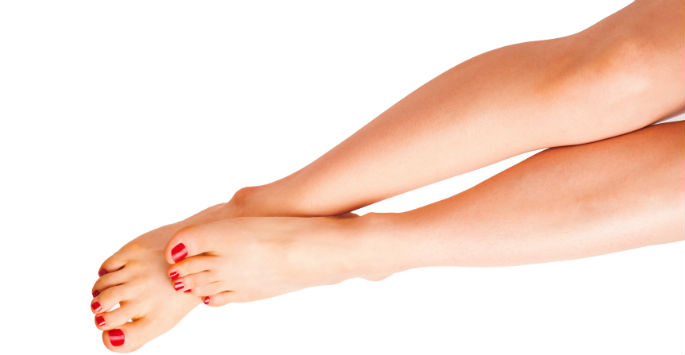[vc_row][vc_column][vc_column_text]Once they creep up and turn your legs from “oh, wow” to “oh my god!” you have no choice but to wonder why you get varicose veins in your legs. There’s nothing subtle about them, and the longer they’re left untreated, the bigger, darker, and more painful they become.
To understand why you get varicose veins in your legs is to understand the many different factors associated with venous disease and vascular health. At Fox Vein & Laser Experts in Hollywood, we specialize in and treat, patients with varicose veins of all kinds.
Fox Vein & Laser Experts is a Miami vein clinic with decades of experience in treating venous disease and vascular conditions. From the tiniest of spider veins to the thickest of varicose veins, we have a multitude of vein removal treatments to keep you in your best health – and looking great, too.
 Varicose veins are swollen, twisted veins that lie just under the skin and usually occur in the legs. Veins have one-way valves inside them that open and close to keep blood flowing toward the heart. However, weakened or damaged valves or walls in the veins can cause blood to pool and even flow backward. This is called Reflux Vein Disease. The veins may grow larger and become distorted, resulting in varicose veins, as reported by the National Heart Lung and Blood Institute (NHLBI).
Varicose veins are swollen, twisted veins that lie just under the skin and usually occur in the legs. Veins have one-way valves inside them that open and close to keep blood flowing toward the heart. However, weakened or damaged valves or walls in the veins can cause blood to pool and even flow backward. This is called Reflux Vein Disease. The veins may grow larger and become distorted, resulting in varicose veins, as reported by the National Heart Lung and Blood Institute (NHLBI).
“We see patients of all ages with varicose veins that they are desperate to remove,” Dr Susan Fox, owner, and founder of Fox Vein & Laser Experts shares. “Unfortunately, many people are not educated about what will lead to the growth of these unsightly, uncomfortable vascular issues and that kind of education is important.”
What causes Varicose Veins?
“Varicose veins are caused by increased blood pressure in the veins. Varicose Veins happen in the veins near the surface of the skin (superficial).
The blood moves towards the heart by one-way valves in the veins. When the valves become weakened or damaged, blood can collect in the veins. This causes the veins to become enlarged. Sitting or standing for long periods can cause blood to pool in the leg veins, increasing the pressure within the veins. The veins can stretch from the increased pressure, hence the dark green, blue or purple rope-looking veins that appear on your calves, shins, and thighs”. – Johns Hopkins Medicine
What are the lifestyle factors for Varicose Veins?
There are a number of lifestyle factors weaken the veins and causes the blood to pool in the legs:
Obesity or being overweight
Age – older veins tend to weaken
Being inactive; lack of exercise, living a sedentary lifestyle, sitting for long periods of time
Standing for long periods of time; working a job that requires you to be on your feet
Pregnancy
Smoking
Taking oral contraceptives
Taking any hormone therapy pills
What are the Symptoms of Varicose Veins?
If you’re wondering whether the ropey, braid-like veins are your legs are varicose veins, chances are, you might be right – especially if you’re experiencing symptoms such as:
1) Burning or itching sensations on your legs
2) A heavy, achy feeling in any part of your legs
3) Rashes
4) Sores or open wounds
5) Change of skin color in one part of your legs
It’s critically important, now that you understand why you get varicose veins in your legs, to understand why they cannot go untreated. Varicose veins very often can lead to a more serious venous disease called deep vein thrombosis, or, DVT.
 Deep vein thrombosis (DVT) develops when a blood clot forms in a deep vein rather than a superficial vein. It usually occurs in the calves or thighs, but can occur in other places. A blood clot is a thick clump of blood that becomes solid and lodges in the vein. As time passes, the clot can become larger. Deep vein thrombosis is most common in people who are more than 50 years old, although there are conditions that can put anyone at risk of developing it.
Deep vein thrombosis (DVT) develops when a blood clot forms in a deep vein rather than a superficial vein. It usually occurs in the calves or thighs, but can occur in other places. A blood clot is a thick clump of blood that becomes solid and lodges in the vein. As time passes, the clot can become larger. Deep vein thrombosis is most common in people who are more than 50 years old, although there are conditions that can put anyone at risk of developing it.
There are symptoms of DVT, but only about 50 percent of the people who develop the condition have symptoms. The most common symptoms are:
1) Swelling of the ankle or foot that is often only on one side
2) Cramps in the calf that has DVT
3) Pain in the ankle or foot for no apparent reason
4) A warm spot on the surface of your skin
5) The skin over the vein turns red, blue or pale
Contact us at Fox Vein & Laser Experts
Hopefully, though, we’ll be seeing you long before things reach this point so that we can give you the best treatment for varicose veins in Miami. Contact us today to set up your consultation![/vc_column_text][/vc_column][/vc_row]

